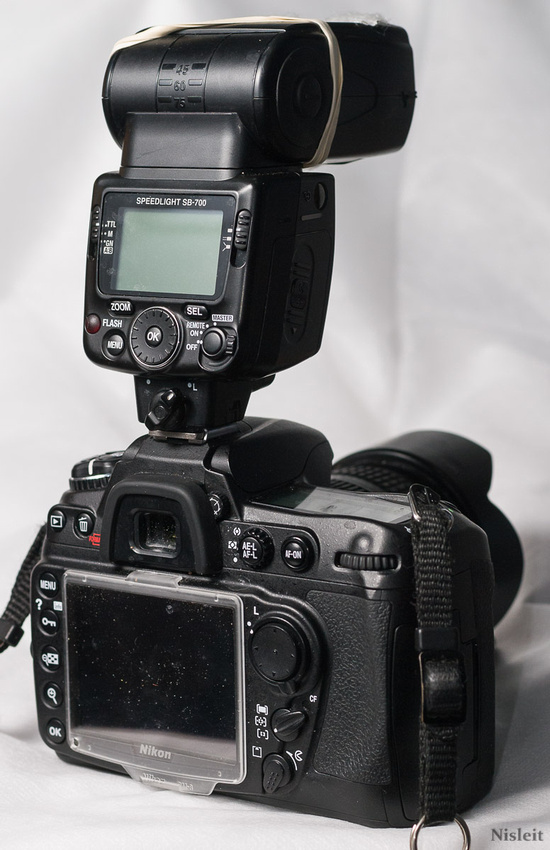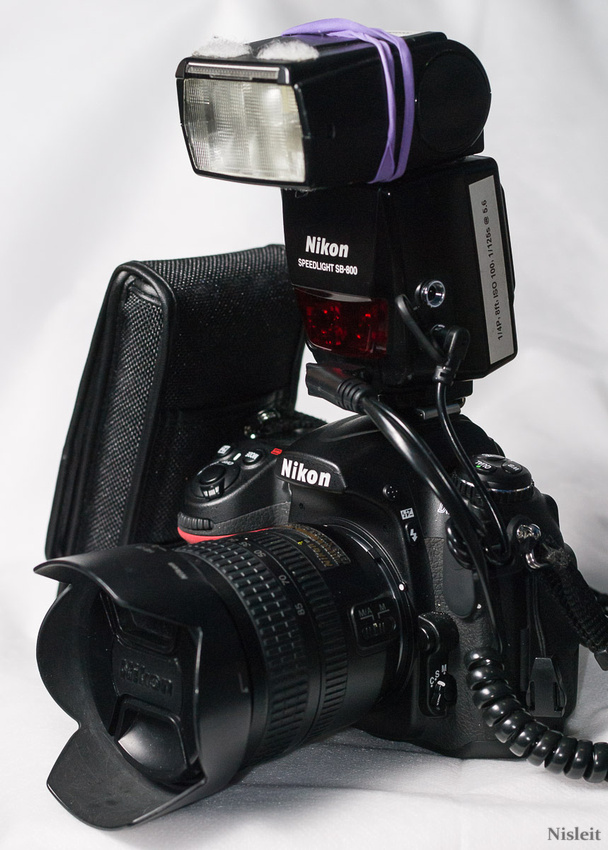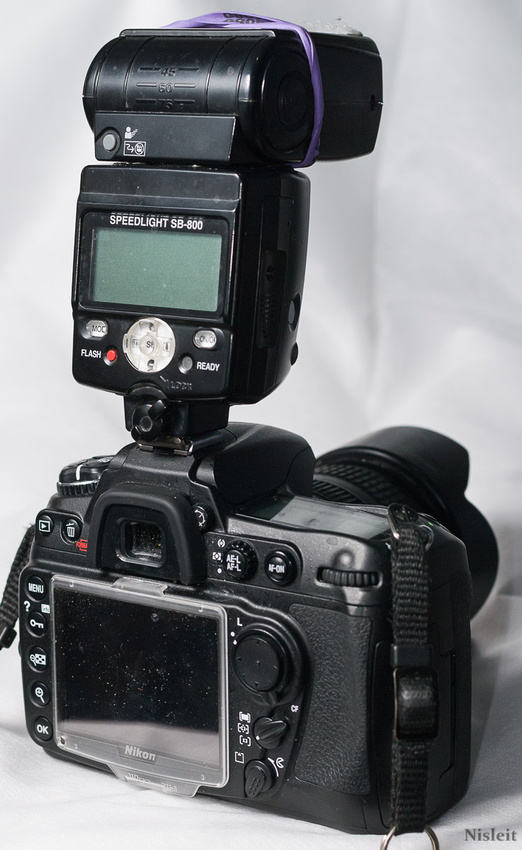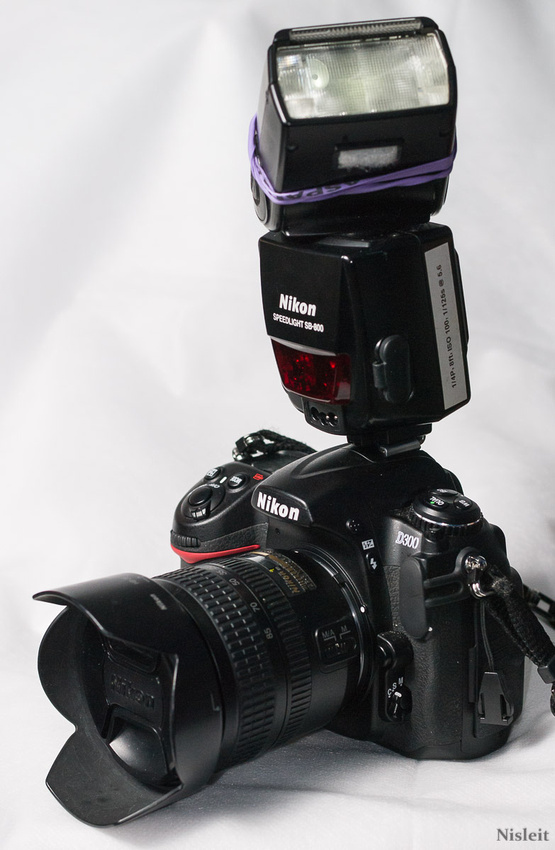Beginner's Guide to Purchasing Speedlights (Flashes)
A question I see often is what flash to get for your camera. For the beginner, obviously I would not recommend paying big bucks for a pro flash. But let's look at what about flashes makes them so expensive or inexpensive, and why you'd need them.
The answer is not exactly simple, but pro equipment is more expensive and considered pro equipment for a reason: It has the features, dependability and functionality pros demand and use on a regular basis. Most people will never understand how to use these features, such as manual flash or wireless flash.
As with any equipment decision, be honest about your ability. If you're taking pictures of your kids, get a flash that reflects that level of skill and use. Don't give into temptation by flashy (I didn't even plan that pun) marketing tactics or juicy features, and don't look at a nice promotional picture and think you can immediately achieve the same thing if only you had the flagship model. Be realistic about what you can accomplish right now with flash. If it's little more than putting it on auto and snapping away, you won't get any more out of a pro flash than a simple consumer model.
Consumers have used flash for mainly one thing since it was invented: general lighting in dark situations, like at a family birthday party, without needing any knowledge of flash. The solution has always been direct on-camera flash, which yields the same look every time: not flattering and sometimes washed out. The washed out part is due to lack of understanding of flash. However, this remains the easiest flash to do. For this type of flash, you need nothing more than a basic unit.
Not to skew the article, but I use only Nikon, so, the SB-300, for example, is a nice upgrade to a camera with no flash or a pop-up, without any extra features or complexity of pro equipment. It enables you to tilt the head up for ceiling bouncing, but that's about it. With just two AAA batteries, compared to the minimum four AA's of pro flashes, it's just a straightforward basic flash with the ability to work with your camera to automatically guess a good exposure, and the $150 price tag reflects that. You can still learn the basics of flash with the SB-300 and an entry-level DSLR and then move up.
Let's say you don't think the basic flash is enough. Ask yourself exactly why you need more, how you'll use it, and whether you can actually make use of it, or whether it's just something that'll make you feel better.
The next step up from the SB-300, other than the almost identical but bigger SB-400, is the SB-700 at $330. The SB-700 is a blend of pro and amateur equipment. It provides the flexibility of a fully rotating head, more power, color balancing gels, and remote and commander capabilities. Some of us are conditioned to believe, mostly due to marketing or peer pressure, that we need these extra features just in case that rare situation occurs where we might use them, or one day we might accidentally discover classical lighting techniques and suddenly vault ourselves into the company of masters. The reality is most people with intermediate flashes like the SB-700 never get past basic bouncing and TTL on camera, mostly because they don't need to and never learn how. In fact, most people don't even understand how automatic flash works.
Still, the SB-700 is what a lot of people who consider themselves advanced amateurs want, so let's look at it some more. If you take away the remote features, what you essentially have left is power and head rotation. Is that enough to justify the more than doubling of price? Do you even know what to do with it or are you planning to learn?
You would need the power, for example, to blast through diffusers or into modifiers, or if you do a lot of bouncing or sculpting of light, which few amateurs do. Many believe they need the power to reach greater distances, but they don't understand that the further the light is from the subject, the smaller and harsher it gets, and the weaker it gets. To get soft, flattering light, you need to enlarge the flash with a modifier and get close. For pros, the power comes in handy mainly when they need to bounce or modify the flash, not necessarily for distance. We understand that bouncing off of a 50-foot ceiling is essentially pointless.
 Nikon SB-700 SpeedlightNikon's SB-700 is an advanced Speedlight that works with Nikon's Creative Lighting system and is compatible with DSLRs starting with the second generation. Notice it has no ports for a battery pack or sync cord.
Nikon SB-700 SpeedlightNikon's SB-700 is an advanced Speedlight that works with Nikon's Creative Lighting system and is compatible with DSLRs starting with the second generation. Notice it has no ports for a battery pack or sync cord.
 Nikon SB-700Pictured is the back of the Nikon SB-700 Speedlight featuring the new wheel selector and updated interface. On the right side is the battery door and wireless eye.
Nikon SB-700Pictured is the back of the Nikon SB-700 Speedlight featuring the new wheel selector and updated interface. On the right side is the battery door and wireless eye.
If you have some understanding of flash and what to do with it off-camera, or plan to learn it soon, the remote and commander functions of a flash like the SB-700 can serve you, but only if you have that understanding. Without it, you're just fooling around. Remote TTL is not too complex or difficult to practice. For a hobbyist, it can be fun to experiment with, but again how much will you be taking full advantage of it? It also requires something to command the flash, which means a pop-up, another Speedlight, or an expensive commander unit. It's also ideal to have something to hold the flash where you want it, like a light stand -- yet another equipment investment if you're serious about remote flash. If you already have a remote-capable flash, the SB-700 can be used as either a remote or commander with that unit.
The SB-700 is a nice intermediate flash that I use as a second unit, but if you're not a pro, the older and cheaper SB-600 will serve you almost the same. If you don't need the advanced features of something like the 700, you have my permission to save money and get something more basic. It won't hurt, and if you really want to learn, learn with the basic flash and then when your skills advance buy a flash that can handle more advanced lighting.
Both the 700 and 600 lack some punch and other characteristics of even more professional flashes, like the SB-910 or SB-800. For example, they don't accept external battery packs, which help tremendously with long shoots and reduced recycle times, especially handy when you're firing near full power during a portrait session or wedding. The 910 and older but still reliable SB-800 can accept battery packs.
Also, the 910 can control more flashes than the 700, making it more versatile for remote shooting. The 910 also has advanced manual flash functions making it easier to expose correctly in manual mode. Of course, the 700 and 910 have slicker menu systems to drive all their features, which the basic and older flashes don't. Again, these are things you might not need.
 Nikon SB-800Pictured is Nikon's SB-800 Speedlight with attached battery pack. This is considered a pro flash because of its remote abilities, battery pack and sync cord ports, power and head rotation.
Nikon SB-800Pictured is Nikon's SB-800 Speedlight with attached battery pack. This is considered a pro flash because of its remote abilities, battery pack and sync cord ports, power and head rotation.
You'll notice a pattern with flashes as with any photography equipment: The more control you need, the more you pay. Photographic equipment is nothing but a way to control light. Expensive cameras have more ways to control light and customize the shooting experience, and a bit more detail from the sensor. Flashes are the same. Expensive ones give you more ways to control light and make the experience more convenient, but those are only tools and it's still up to you to make a good picture.
Until you master light and can be creative with it, there's probably no need to go spending on bigger and better flashes that are only really bigger and better if you have the skill to use them. If not, they're not better at all. They're just more expensive. Hoping a more advanced flash will advance your photography without any understanding or work isn't going to help.
There are many other flashes in the Nikon line, such as close-up flashes, an LED movie light, and much older units. I have covered only the three main levels and what you can expect from them -- the beginner flashes, which are just minor upgrades from pop-ups or no flash; the intermediate units that introduce pro features without as much power or flexibility, and the pro units that represent the state of Speedlight art.
Once you determine what you actually need and can use, you can save money by not buying it new. And if you really want to play around with stuff that you don't yet know how to control, get an older cheaper generation. The SB-600, for example, is no longer a current model but it's still a great system on which to learn all the fundamentals of flash at a good price. Good refurbished dealers, like Adorama, can save you money on equipment that works just like new for a bit less cost.
The benefit to name brand units like Nikon is that they're built to withstand pro use, so the used market offers some great deals regularly. You may get a savings of $100 or more on high-end flashes, and even the basic units can be worth buying used. A new flash doesn't work any differently or more effectively than a used one. Scour listings carefully until you find just the right one. You don't see many old no-name flashes around. But you still see a lot of old Canon, Nikon and Vivitar flashes because they last, and you can pick them up for a bargain.
You'll notice that one thing I don't recommend is buying cheap off-brand units like Yongnuo or Sunpak. These units are manufactured to fail. They're designed for one purpose: to satisfy the market who doesn't want to spend on real gear. Can they work? Maybe, it depends, and sometimes. But I've had enough experience to know that saving money on cheap equipment always comes with other costs and eventually you'll just wish you would have paid more up front for a name brand unit. As a working pro, I can't rely on maybe, it depends and sometimes. I always go name brand. The cheap stuff is safe only for non-critical items, like reflectors, lens caps, bags. In my book, life is too short to let something as petty as price get in the way of something that means the difference between achieving a dream and standing in the return line.
As of November 2013, I own the Nikon SB-800 and SB-700, but I would never buy another SB-700 because of its lack of battery pack connector. If I needed a simple background light that didn't require a battery pack, I would go with an older SB-600, and, if it didn't require any advanced features -- for example just a slave eye -- I might even go with an older SB unit or Vivitar manual flash. I keep an SB-80DX around just in case I need a simple manual light for something.
 Nikon SB-800Nikon's SB-800 is an older pro flash but is just as capable of producing high-end lighting as the newer units.
Nikon SB-800Nikon's SB-800 is an older pro flash but is just as capable of producing high-end lighting as the newer units.
 SB-800The SB-800 is pictured with an example of the flexibility of the flash head. It can rotate 90 degrees up and 360 degrees around, with varying degrees of tilt.
SB-800The SB-800 is pictured with an example of the flexibility of the flash head. It can rotate 90 degrees up and 360 degrees around, with varying degrees of tilt.

